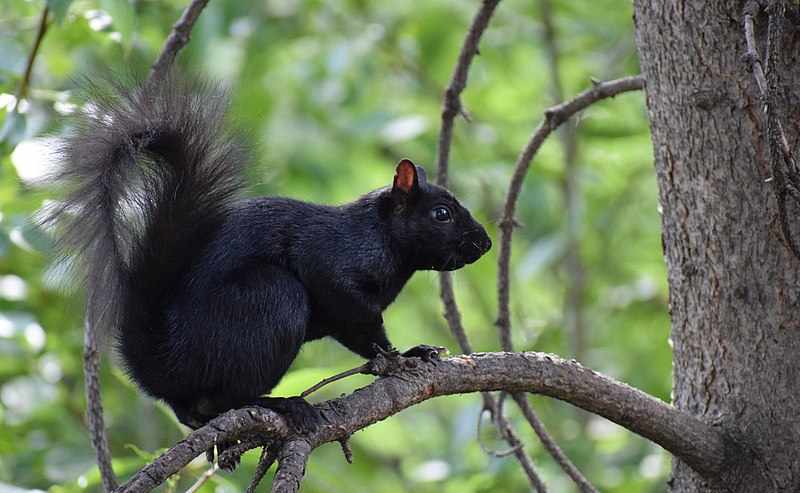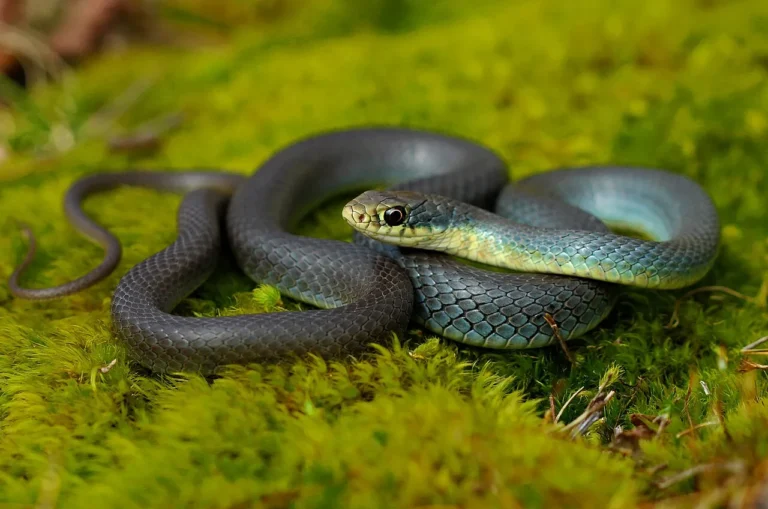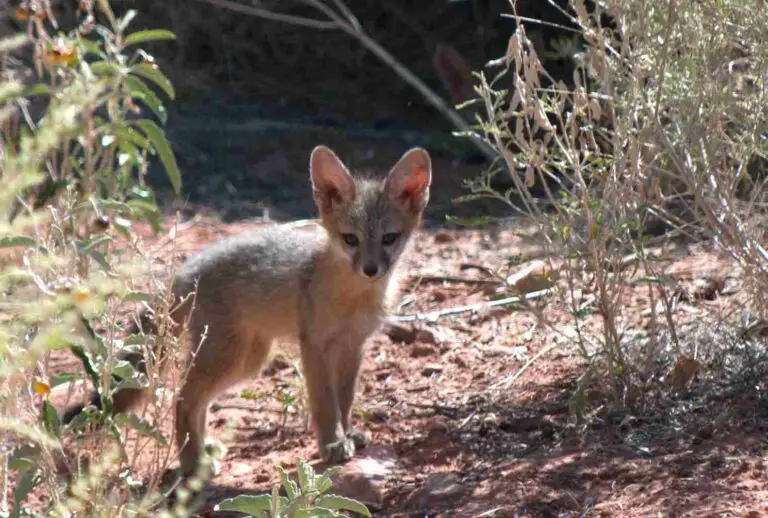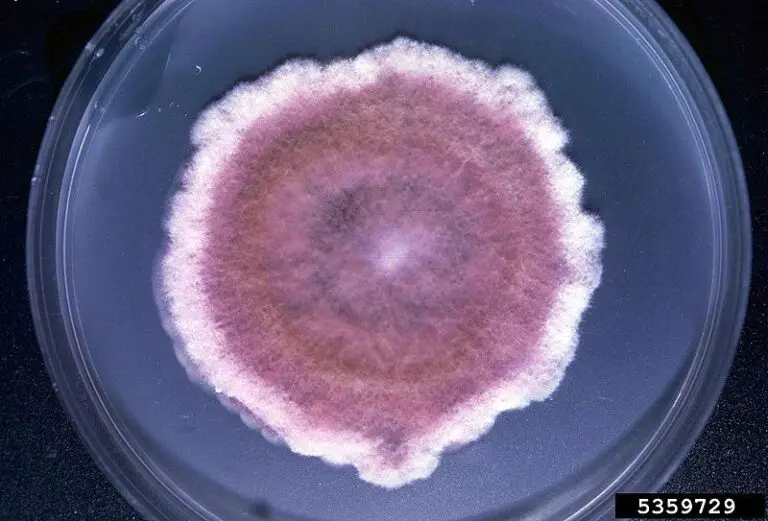Deciduous Forest Food Web with Feeding Relationships Explained
Deciduous forest food web comprises of interlinked sequences of bioenergy-transfer, between producers and consumers including shrubs, trees, insects, reptiles, birds and mammals.
This article discusses the food web of deciduous forest, using analogies from various trophic levels and food chains, as follows;
1). Multi-Organic Deciduous Forest Producer Level (as part of the Deciduous Forest Food Web)
The basal trophic level (also known as trophic level 1) in a deciduous forest is occupied by diverse autotrophic organisms called producers.
These organisms constitute the foundation of all ecological models of a deciduous forest, including energy and biomass pyramids, food chains, and food webs.
Producers are important as the main source of bioenergy and biomass, to the deciduous forest. They derive these resources from photosynthesis; whereby visible light rays from the Sun are captured and used to catalyze biochemical reactions in the cells of the autotrophic organism [1].
Food webs comprise of multiple feeding relationships between organisms at various trophic levels in the ecosystem.
*Organisms
In deciduous forests, trophic level 1 is abundant with producers of different species and adaptations. Examples of these producers are; shrubs, trees, herbaceous plants, lichens and mosses; all of which can be broadly grouped into vascular and non-vascular categories.
Shrubs in the deciduous forest are woody plants which fall behind trees in terms of size and height. These plants are relatively-abundant in the understory of the forest canopy, and include examples such as; blueberry, dogwood and hazel.
Trees are the most dominant producers in the deciduous forest, and include diverse species with minor differences in physiology and adaptation. Examples of deciduous trees are; maple, hickory, oak and birch.
Herbaceous plants are low-height vascular plants that lack woody stems and occur in the understory and close to the forest floor. Some examples of herbaceous plants in deciduous forests are; wildflowers and ferns.
Lichens and mosses are non-vascular plants that grow on humid soil sections of the deciduous forest floor. They are less-represented in terrestrial ecosystems like than vascular plants.
*Feeding Relationships
Instances of possible feeding relationships between deciduous forest producers and other organisms in their environment are;
1. Rabbits may feed on shrub twigs and leave
2. Squirrels can consume buds of hickory and oak trees
3. Deer can feed on leaves and stems of herbaceous plants

2). Multi-Organic Deciduous Forest Primary Consumer Level
Primary consumers in the deciduous forest are mostly herbivores that consume primary producers like shrubs and herbaceous plants, to obtain energy and nutrients in the process [4].
They are important because their activities contribution to the biological speciation of plants in the deciduous forest, and help in regulating the size of autotrophic populations.
Also, primary consumers serve as a food source to organisms that occur higher in the trophic hierarchy of the deciduous forest.
*Organisms
Examples of deciduous forest primary consumers are; herbivorous birds, mammals, and insects.
The herbivorous birds in deciduous forests feed on various forms of plant biomass include nuts, flower-nectar, seeds, fruits and leaves. Examples of these birds are; finches and thrushes.
Herbivorous mammals in deciduous forests may be small-sized, like squirrels and hares; or relatively-large, like deer, moose and elks. Their food includes twigs, leaves, bark and seeds of trees and other plants.
Insects that are primary consumers in the deciduous forest include grasshoppers, bees, caterpillars and beetles; that consume plant materials like stems, flowers and leaves.
*Feeding Relationships
Unlike primary producers that interact with other organisms by serving as a source of food, primary consumers can serve as both a food-source and a food-consumer.
Below are some possible scenarios of trophic interaction between deciduous forest primary consumers and other deciduous forest animals.
1. Grasshoppers and caterpillars can feed on herbaceous plant leaves
2. Hares can feed on shrub stems and roots
3. Small carnivores like snakes can feed on hares and squirrels
4. Larger carnivores like wolves can prey on large primary consumers like deer

3). Multi-Organic Deciduous Forest Secondary Consumer Level (as part of the Deciduous Forest Food Web)
Deciduous forests are also home to multiple species of secondary consumers; which are carnivorous organisms that feed mainly on primary, herbivorous consumers.
The feeding activities of secondary consumers in deciduous forests help to regulate herbivore population size, while serving as a medium of continuity for energy transfer, from producers and herbivores to heterotrophic, non-herbivorous organisms.
*Organisms
Examples of deciduous forest secondary consumers are; carnivorous reptiles, mammalian carnivores, and raptors.
Carnivorous reptiles in the deciduous forest include copperhead, garter snakes, and some lizard species. Their ability to catch prey is linked to high sensory and efficient locomotive adaptations.
Food sources for these reptiles include insects and small mammals like rodents.
Mammalian carnivores in temperate deciduous forests have adaptive physiological and behavioral features like agility, well-developed claws, teeth and high-sensitivity; which enable them capture prey. Examples of these organisms are coyote, lynx, fox and bobcat.
Raptors have the advantage of aerial locomotion and keen sensitivity that help them during prey-hunting. Examples of organisms in this category are; owls and hawks.
*Feeding Relationships
1. Coyotes may hunt and feed on deer [2]
2. Bald eagles can consume herbivorous rodents like hares
3. Snakes can also feed on rodents and smaller reptiles like lizards
4. Coyotes may also adopt an omnivorous diet including fruits and plant matter [3]
4). Multi-Organic Deciduous Forest Tertiary Consumer Level
Tertiary consumers in deciduous forests may sometimes be classified as the highest trophic level of the ecosystem.
These organisms occupy level 4 of the food chain, and may contribute to the formation of intricate food web-structures through their feeding interactions with other organisms.
Animals that are classified as tertiary consumers may in other cases be placed among quaternary consumers, depending on the species richness of the deciduous forest being evaluated.
Activities of tertiary consumers are essential toward the sustainability of the deciduous forest, the recycling of its biotic and abiotic resources, and the regulation of its organic population-sizes.
*Organisms
Examples of tertiary consumers that occur in deciduous forests are; large carnivores, and some raptors.
Large carnivores in the deciduous forest are mostly mammalian in nature, and survive by means of their size, agility and sensitivity. They include pumas and wolves, which are both obviously larger than coyotes foxes and bobcats of the secondary-consumer level.
Raptors that can be classified as tertiary consumers include bald eagle and golden eagle. These animals, though relatively-small in size, are less-vulnerable due to their high-altitude locomotion and habitation.
*Feeding Relationships
1. Eagle may prey on the garter snake
2. Puma can consume elk and deer
3. Wolf can feed on deer
5). Multi-Organic Deciduous Forest Quaternary Consumer Level (as part of the Deciduous Forest Food Web)
Quaternary consumers in deciduous forests are at the absolute-highest trophic level and can be alternatively described as apex predators.
*Organisms
Humans are sometimes classified as quaternary consumers due to their ability to hunt and prey upon deciduous animals in any trophic level.
Bears can also be considered quaternary consumers, along with pumas and wolves, in some cases. The classification of any consumer at the quaternary level depends on the overall animal-composition of the ecosystem.
*Feeding Relationships
1. Bears may feed on deer
2. Humans may hunt deer, birds, and even pumas and bears for food
3. Bears can, in rare cases, consume smaller carnivores like coyotes foxes
4. Bears may feed on fruits, seeds, nuts and twigs

Overview of the Deciduous Forest Food Web
The multiple instances of organisms and feeding relationships discusses so far, form the foundation on which multiple deciduous forest food webs may be identified.
These webs are based on multiple food chains that can be linked through mutual elements or organisms, that simultaneously contribute to the progression of thee food chains through their feeding activities.
Below are food chains extracted from the information in this article, with mutual organisms that can link them to each other, to form food web(s).
Food Chain 1: fern→deer→coyote→bear
Food Chain 2: wildflower→butterfly→lizard→garter snake→eagle
Food Chain 3: blueberry shrub→squirrel→coyote→bear
Food Chain 4: hazel shrub→hare→eagle
Food Chain 5: fern→elk→puma
Food Chain 6: blueberry shrub→hare→fox→wolf→human
Conclusion
Deciduous forest food web comprises of;
1. Multi-Organic Deciduous Forest Producer Level
2. Multi-Organic Deciduous Forest Primary Consumer Level
3. Multi-Organic Deciduous Forest Secondary Consumer Level
4. Multi-Organic Deciduous Forest Tertiary Consumer Level
5. Multi-Organic Deciduous Forest Quaternary Consumer Level
References
1). Johnson, M. P. (2016). "Photosynthesis." Essays in Biochemistry 60(3):255-273. Available at: https://doi.org/10.1042/EBC20160016. (Accessed 30 May 2023).
2). Messier, F.; Barrette, C.; Pettorelli, J. H. (2011). "Coyote predation on a white-tailed deer population in southern Quebec." Canadian Journal of Zoology 64(5):1134-1136. Available at: https://doi.org/10.1139/z86-170. (Accessed 30 May 2023).
3). Mihart, M. G. H.; Cantu-Salazar, L.; Martinez-Meyer, E.; González-Romero, A. (2009). "Coyote (Canis latrans) Food Habits in a Tropical Deciduous Forest of Western Mexico." The American Midland Naturalist 146(Jul 2001):210-216. Available at: https://doi.org/10.1674/0003-0031(2001)146[0210:CCLFHI]2.0.CO;2. (Accessed 30 May 2023).
4). Sobek, S.; Scherber; C.; Steffan-Dewenter, I.; Tscharntke, T. (2009). "Sapling herbivory, invertebrate herbivores and predators across a natural tree diversity gradient in Germany's largest connected deciduous forest." Oecologia. 2009 May;160(2):279-88. Available at: https://doi.org/10.1007/s00442-009-1304-2. (Accessed 30 May 2023).



